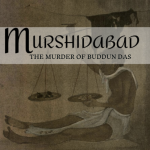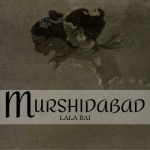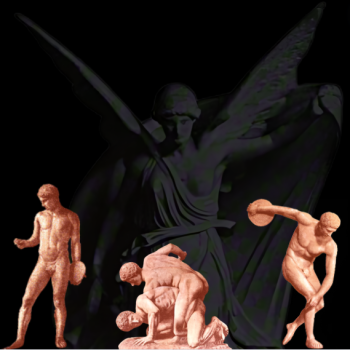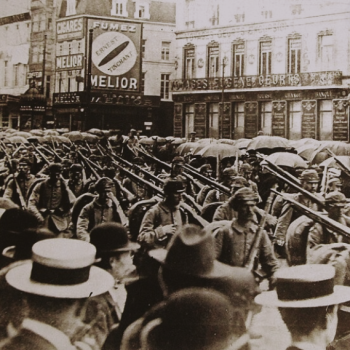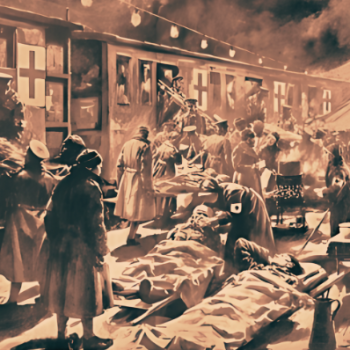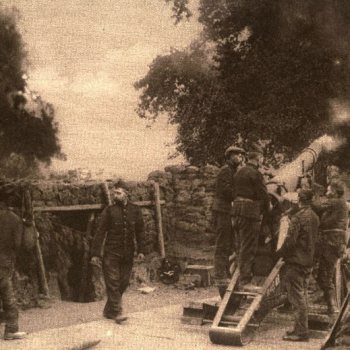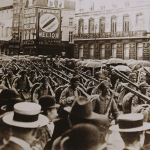PROSTITUTION AND INTERMARRIAGE IN COLONIAL BENGAL
Before we return to the courtroom, a little exposition is needed. The following two chapters deal with prostitution in Murshidabad, and some keywords and concepts will be of some use. The next chapter, “Lala Bai,” concerns a trial involving a young babu, and beautiful town prostitute named Lala Bai. While in Western India, the suffix “Bai” was a respectful address for a woman, in Bengal it meant prostitute.[1] It would seem that this trial would serve as the inspiration for Johnston’s Kela Bai: An Anglo-Indian Idyll (1900.)[2]
The concept of kula (a word derived from Sanskrit meaning shared blood and shared bodily substance) is a subtext to the trial. Applied mainly to upper caste Hindus, the demarcation of kula was traditionally based largely on ritual consideration. To mix with someone not of the same blood was seen as a blot on the prestige, and the fear of losing the honor of one’s kula haunted upper-caste Hindus.
This anxiety was enflamed with the advent of colonialism, a time when the social scaffolding was uprooted and continually redefined. One of the results in the shift of the political economy under colonial rule was the general devaluation of women’s work. The cheapening of labor, and labor surplus in the agrarian sector, forced peasant households to depend increasingly on the participation of women and children in outside labor. The rise in prices of agricultural commodities and reduction in wages, however, also made it easier for middle-peasants and traders to veil women’s visible labor inside the house, by constructing a private space in their homes known as the andarmahal. Freeing women from outside labor demonstrated an ability to dispense with their contribution to household income, and the observance of purdah became linked with social and moral status, separating the bhadramahila (gentlewoman) from the dasi (laboring poor.) Eventually the bhadramahila became deified as grihalaxmi and kulabadhu, while the dasi was designated as an alaxmi, asati, and kulata (prostitute.)
The largest migrant-group to Calcutta from neighboring districts between 1858 and 1873 were widows and abandoned wives from lower-caste families whose husbands left their villages owing to uncertainty of employment. These women had carved out a living by spinning in previous generations were now thrown out of their occupation by the importation of English yarns. Forced to leave their ancestral village homes, these women took jobs as domestic servants or ended up as prostitutes in Calcutta’s brothels.[3] The first patrons to these brothels were the babus. Many contemporary Bengali farces depicted a foppish babu and the prostitutes whom they engaged with. The babu was typically portrayed as the pampered son of a rich dewan or zamindar, who squandered the wealth he inherited from his father on drinking, women, and other amusements. He was usually in the company of mosahebs (sycophants,) and lecherous brahmin priest.[4]
The rise in prostitution was alarming enough that in 1872-1873, the Bengal Government asked the Deputy Magistrate of Murshidabad, Bankimchandra Chattopadhyay, to furnish reports on the causes of prostitution. Bankimchandra found that one of the main causes which led women to embrace prostitution was “seduction by unprincipled villains who seduced women from their households, often leaving them to their fate, after their novelty wore off.”[5]
In 1881 the British Raj passed the Indian Factories Act, whereby women and children were legally allowed to enter the industrial workforce. The British parliamentary reports of 1884-1885 reported that unlike the cotton mills of Bombay, the jute mills of Calcutta hired a large number of women and children. Because of their association with low skill, however, they were given the lowest paying jobs in the mills. They were regarded as a labor reserve when male labor was short and were the first to lose their jobs when their employer needed to cut costs.[6] Prostitution was one of the few options available to such women realistically survive.
The number of prostitutes increased each year in the larger Indian cities. The Indian elites regarded this as a “social evil” which reflected poorly on their leadership capabilities. Colonial educators and missionaries exploited the situation as leverage in their claims of moral superiority, greatly testing the faith which natives had in themselves. The plight of Indian women remained a at the forefront of the debates, as reformers addressed such topics as polygamy, widow burning, child marriage and prostitution. It was clear from the outset that these reforms were meant only for upper-caste Hindu women. (Lower-caste artisans and peasants were kept on the periphery of the debates, and Muslims were excluded entirely.)
By the latter-half of the 19th century, a new generation of prostitutes emerged who exercised their autonomy by vocally asserting that their work was a voluntary choice. They were the daughters of the prostitutes who emerged from the earlier periods. In British administrative jargon they were “hereditary prostitutes,” while in Bengali slang they were known as “dobol khanki,” (“dobol” from the English word “double,” and “khanki” meaning prostitute.) [7]
At the same time, a number of Bengali texts emerged which projected the prevailing ideology that upper-caste Hindu women were the embodiment of moral order. In 1888, just a year before the Johnstons arrived in India, Sri Nabakumar Datta published his novel, Swarnabai. Datta was an upper-caste Kayastha who aligned himself with the group of semi-literate traditionalists who formed the core of the lower-middle-class. These men, who shared the ideology of the Hindu conservatives, worked as clerks, surveyors, etc., in British owned commercial firms. They endeavored to preserve the sacrality of the Hindu home, the place where they would not be invaded and persecuted by colonial masters. In Swarnabai, Datta tells the story of how an upper-caste woman entered a life of prostitution, becomes destitute, and is ultimately redeemed by her salvific servitude in a righteous Hindu household.[8]
The plot of Johnston’s Kela Bai would follow in the tradition of novels such as Swarnabai, however, the antagonist is a corrupt sacerdotal system, and the prostitute is the hero. Kela Bai tells the story of the Collector of a remote district of Bengal. One day, after being wrongfully accused of assaulting an Indian sub-inspector named Behari Babu, the beautiful town prostitute, Kela Bai, appeals to the Collector for help. Behari Babu brings the case before the Collector “to avenge the injury of his slighted grace.” The Collector, convinced of Kela Bai’s innocence, dismisses the case, and chastises the local officials. Kela Bai ultimately abandons her life of prostitution and embarks on a religious pilgrimage.[9]
The topic of intermarriage was also on the minds of the British. In the July 1889 issue of The Asiatic Quarterly Review, Sir William Moore stated that dues to the fall in the value of silver, the Indian Civilian was no longer “worth £300 a year dead or alive,” and was, therefore, “of very little use to the British young person.” He theorized that the Indian Civilian was likely to marry a native wife, who according to his description, often possessed charms as seductive as those of “the Anglo-Saxon female,” and would not need to return to Europe for her health, “neither would there be the same necessity for Eurasian children being sent to Europe at an early age as there is for children of European parentage being so dispatched.”[10]
← Table Of Contents →
SOURCES:
[1] Balfour, Edward. The Cyclopedia of India and of Eastern and Southern Asia, Commercial Industrial, and Scientific Vol. I. Bernard Quaritch. London, England. (1885): 233.
[2] In Johnston’s 1911 article, “Helping To Govern India,” written for The Atlantic, he writes: “Holding themselves a little apart from the dusky, patient crowd at the back of the court-room were three exceedingly pretty young women, hardly more than girls, bright with gold bracelets and earrings, and gracefully draped in white muslin saris broadly margined with red; they were smiling, dainty, vivacious, with brown skin no darker than cinnamon, and one could see that they were the target of the eager and slightly scandalized observation of the dingy village folk.” [Johnston, Charles. “Helping To Govern India.” The Atlantic Monthly Vol. 108, No. 5. (November 1911): 643-652.] When compared with passages from Kela Bai, the similarities are evident. Johnston writes: “Kela Bai sat on the edge of her couch, rubbing the dreams out of her eyes. Then she threw her arms above her head and stretched herself long and deliciously. Then she yawned again. She was lithe and supple, with glossy, light-brown skin, and big dark eyes. Then she began to smile. She remembered that she had been dreaming it was her birthday. She often dreamed of this, and always celebrated it by holding a festival, and receiving presents. She had friends everywhere: Bengali landowners from the country round; large-eyed Madrassis from the south; pink-turbaned up-countrymen, and giants from beyond the hills. For she kept open house. Her friends called her Kela Bai—Sister Banana—because she was sweet and accessible, as Ashutosh Babu, a young Brahman friend of hers, wittily said; and they always responded linearly on her birthdays. Therefore, she wore the prettiest Saris of fine white muslin, with edges of red like a Roman senator.” [Johnston, Charles. Kela Bai: An Anglo-Indian Idyll. Doubleday & McClure Co. New York, New York. (1900): 4-5.]
[3] Chatterjee, Ratnabali. “Prostitution In Nineteenth Century Bengal: Construction Of Class and Gender.” Social Scientist. Vol. XXI, No. 9/11 (September-October 1993): 159- 172.
[4] Banerjee, Sumanta. “The ‘Beshya’ and the ‘Babu’: Prostitute and Her Clientele in 19th Century Bengal.” Economic and Political Weekly. Vol. XXVIII, No. 45 (November 6, 1993): 2461-2472.
[5] Bandyopadhyay, Aparna. “Chronicles of Love Betrayal and Prostitution in Late Colonial Bengal.” Proceedings of the Indian History Congress. Vol. LXXV (2014): 723-728.
[6] Chatterjee, Ratnabali. “Prostitution In Nineteenth Century Bengal: Construction Of Class and Gender.” Social Scientist. Vol. XXI, No. 9/11 (September-October 1993): 159- 172.
[7] Banerjee, Sumanta. “The ‘Beshya’ and the ‘Babu’: Prostitute and Her Clientele in 19th Century Bengal.” Economic and Political Weekly. Vol. XXVIII, No. 45 (November 6, 1993): 2461-2472.
[8] Chatterjee, Ratnabali. “Prostitution In Nineteenth Century Bengal: Construction Of Class and Gender.” Social Scientist. Vol. XXI, No. 9/11 (September-October 1993): 159- 172.
[9] Roy, Anindyo. Civility And Empire: Literature and Culture in British India, 1821-1921. Routledge. London, England. (2004): 97.
[10] Moore, W.J. “The Falling Rupee, and a Probable Consequence.” The Asiatic Quarterly Review. Vol. VIII, No. 1 (July 1889): 94-104.


